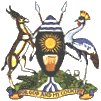|
|  |
|
At the heart of Sub-Saharan Africa, with a growing population of 24.6 million people, Uganda borders Sudan to the north, Kenya to the east, Tanzania and Rwanda to the south, and the Democratic Republic of Congo to the west.
Kampala is the capital of Uganda, and is located in east-central Uganda, with a population of approximately 1.5 million people. The official language of Uganda is English; other languages include Swahili, and Luganda.
Religion
Because of such cultural diversity, Uganda has a span of religious beliefs, ranging from Christianity to Indigenous beliefs.
|
RELIGION |
(%) OF POPULATION |
|
Roman Catholic |
18% |
|
Protestant |
33% |
|
Muslim |
16% |
|
Indigenous Beliefs |
18% |
These religious beliefs are largely reflected in Ugandan lifestyle.
Ugandas government, disparate religious beliefs, and diversity of culture and peoples, each contribute and influence the peoples actions and choices infinitely. These particular categories contribute to Ugandas success and demise in combating the life sweeping HIV/AIDS epidemic.
|
 |
| Government webpage |

|
Government
Since 1860, when Uganda became apart of the British Protectorate, it has experienced a number of different changes. Various developments have occurred in areas such as social, economic, and political establishments. However, it is important to note the drastic and significant changes that Uganda has experienced in its political governance. Since 1962, when Uganda attained independence from the British Uganda, Uganda has seen a total of 7 Presidents with eight regimes.
As a Republic, Uganda embodies its very own constitution, parliament, administration, bills and acts. Under the leadership of President Yoweri Museveni, Uganda presently reflects the new face of a re-emerging country. Museveni has transformed Uganda into a politically stable country. Prevailing for eleven years now, Ugandas broad-based system of government embodying a strong peoples parliament and an independent judiciary, thereby providing its people with a stable and promising future.
|
 |
|
|  |
|
Peoples of Uganda
Uganda is a tremendously culturally diverse Republic, with over thirty spoken languages. There are five broad categories people can be classified: the Bantu, consisting of 50% of Ugandas total population, mainly occupying the southern part of the country ; the Nilo Hamites/Aterkerin, can be found along the north, east and northeastern parts of the country ; the Luo, are another Niolitic group occupying land in the northern and eastern parts of the country; the Sudanic people, and their origin can be traced to Sudan (however, their culture and language are completely detached from their origin). Finally, the Pygmoid people who are the most indigenous group located along the western border of Uganda and the Democratic Republic of Congo.
|
 |
|
|
|
|
|
|  |

